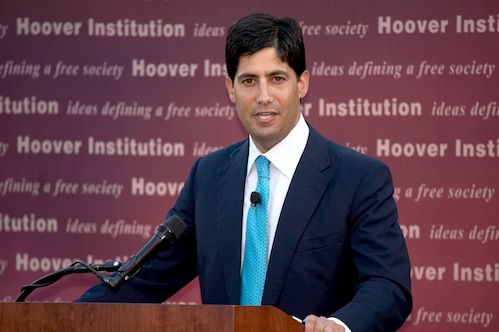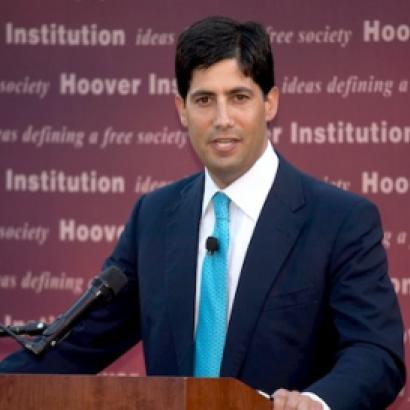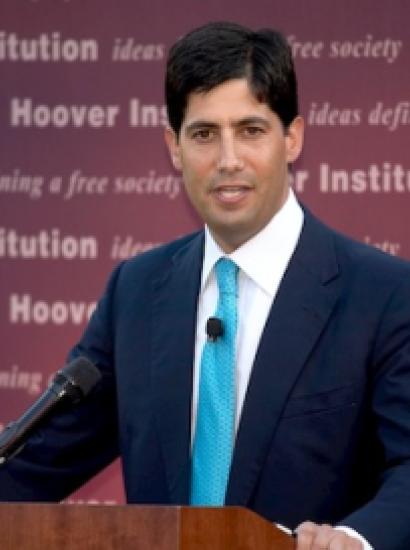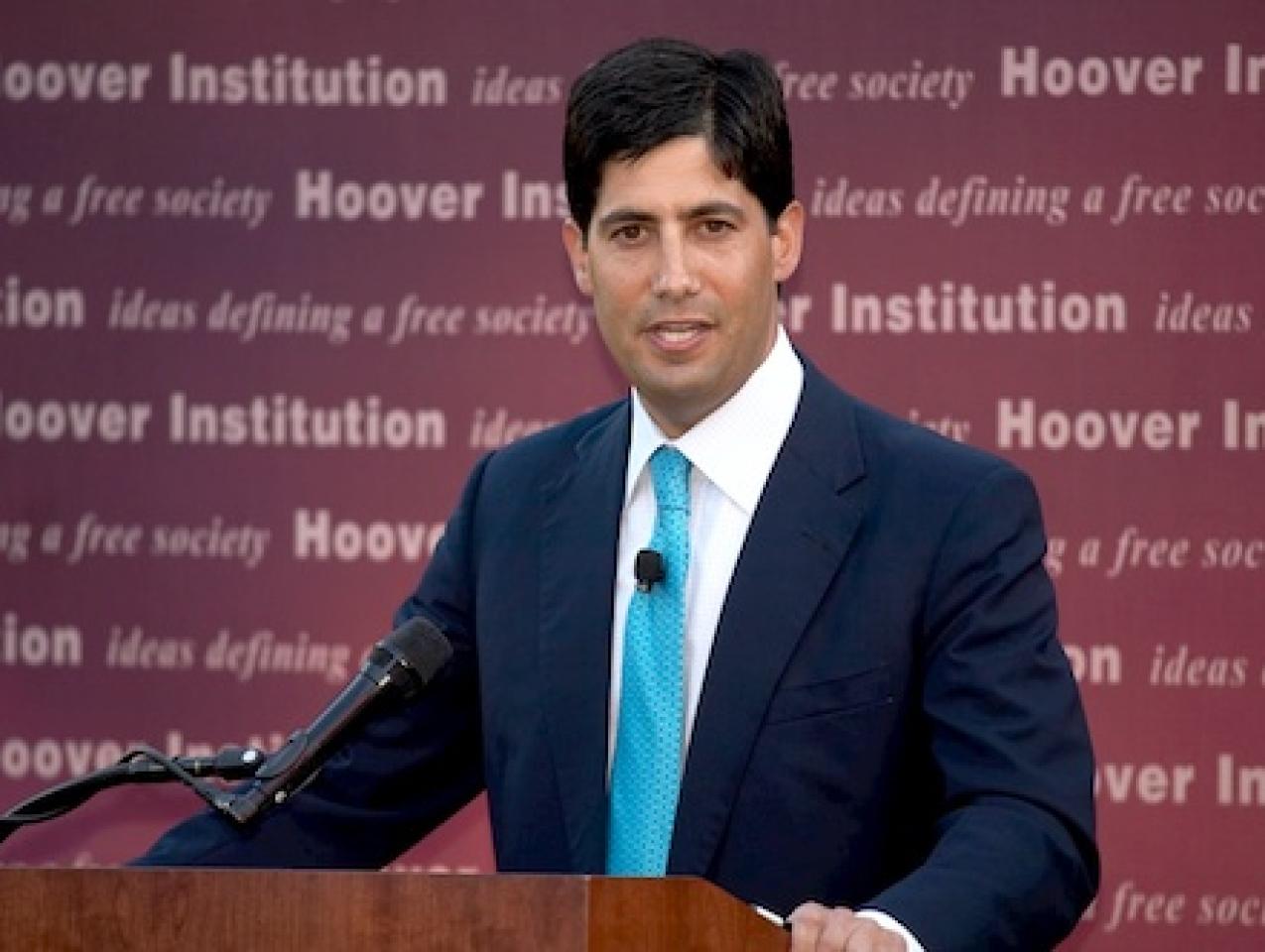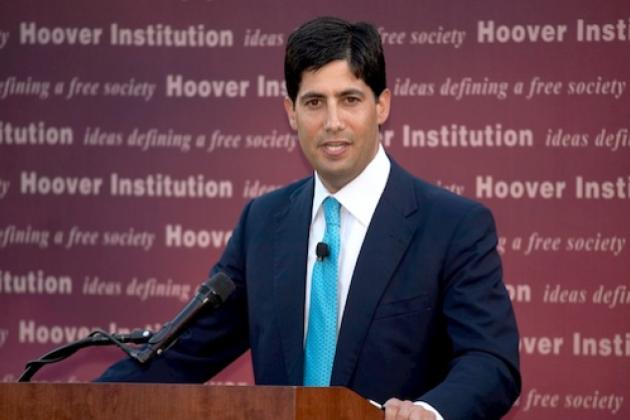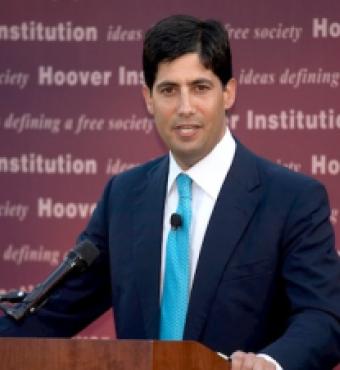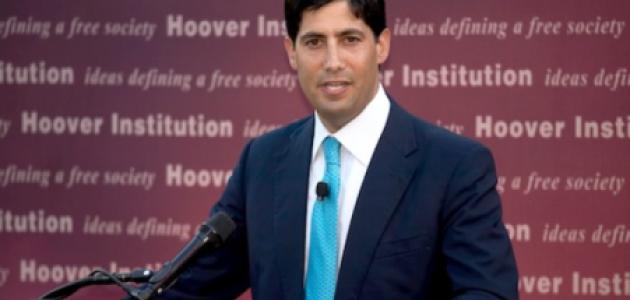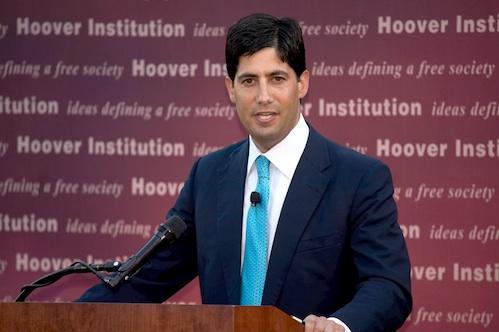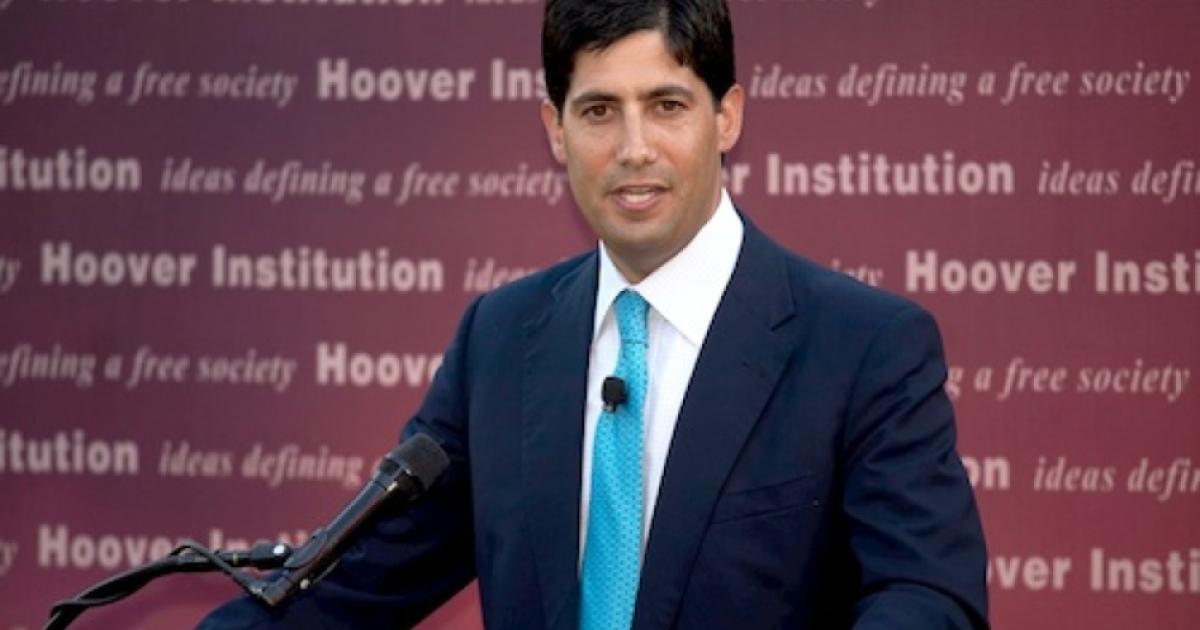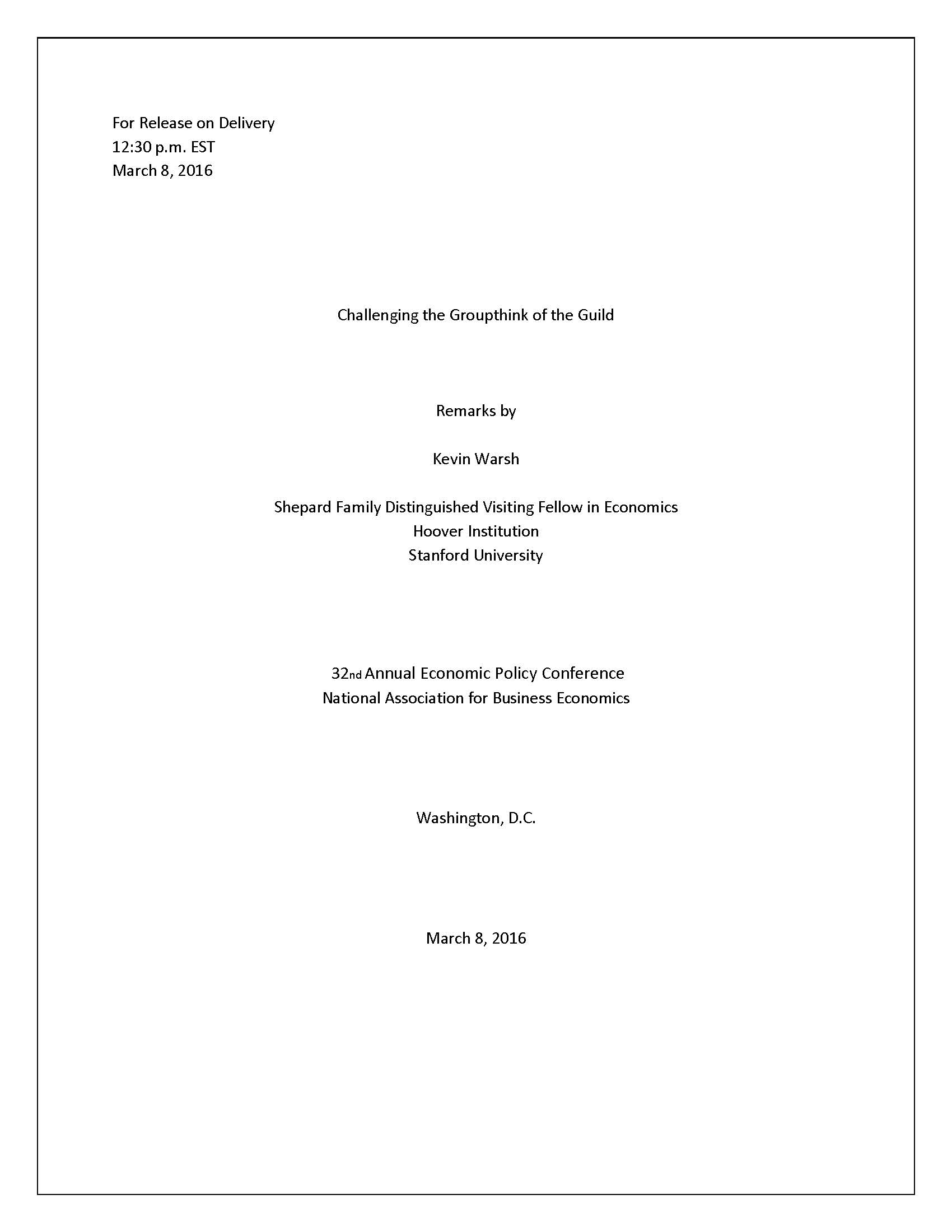- Economics
- US Labor Market
- Law & Policy
- Regulation & Property Rights
- History
- Economic
Hoover Institution fellow Kevin Warsh's remarks on March 8, 2016, at the 32nd Annual Economic Policy Conference in Washington DC titled "Challenging the Groupthink of the Guild."
Thank you. I am honored to join you.
2016 is the most consequential year for the U.S. and global economy since the darkest days of the financial crisis in 2008. So it’s high time that we question some of the persistent practices and trendy truisms that are influencing conduct of monetary policy.
My remarks are not of high praise, but of the high purpose to which our profession is tasked. I speak today in the spirit of reforming the conduct of monetary policy. For those of us who believe strongly in the importance of the central bank, the cause of reform can ill-afford to wait.
And I hope to recruit you in this endeavor.
You stand with a strong footing in both economics and business, and are well situated to help reform the customs of the guild in which we are privileged to be charter members.
So, take note, this will be a working lunch for all of us.
* * * * * * *
The Newer Normal
The world’s central bankers and treasury officials of the largest economies are in strong agreement on one thing: the foreign economy is weak…I am still trying to figure that one out.
The fall in global nominal GDP growth – by more than one-third -- from the pre-crisis period to the post-crisis period is alarming.
We’ve seen a further weakening of global economic growth since the summer of 2015. I suspect some members of our guild will be calling this ‘the newer normal’…as we persist in defining deviancy down.
And we are told by the preachers of secular stagnation that our fates are sealed. This dangerous defeatism by some of the leading lights of our guild is owed more to rationalization than reflection, I am afraid.
As the year advances, economic forecasts from the guild are likely to be marked-down yet again … for the seventh straight year...some would call that a trend. And we should do our best to understand it, not excuse it.
In the U.S., the Fed assures us that while growth has undershot its forecasts since the darkest days of the crisis, the unemployment rate improved faster--as if to suggest forecasting errors are two-sided.
Former Fed governor Larry Lindsey’s detailed analysis finds that the fall in the unemployment rate is a function of three phenomena, only one of which, I should note, offers any consolation: the drop in participation by those among the prime working-age population; weak productivity growth; and, some modest real economic growth.
Hard-working Americans are still waiting for the vaunted portfolio balance channel from quantitative easing (QE) to trickle down. The wealth effect is an older, more accurate moniker for what QE was hoping to accomplish. After all, the wealth effect works best for the wealthy.
Our fellow Americans do not resent wealth accumulation by their fellow citizens. But, they are rightly troubled by wealth increases that are bestowed by central bank policy rather than earned.
The increase in household wealth is impressive for those who already possessed financial assets. But, about half of American households have no accumulated balance sheet wealth. They are living on their stagnant incomes. And these hard-working folks are likely to be the hardest hit when the economy falters, and their incomes deteriorate.
Perhaps that’s why we are seeing a surge in precautionary savings by consumers in recent months.
And why the politics of 2016 seem at odds with the official government statistics which the Fed describes as nearing ‘full employment’.
We should recognize the broken compact between the government and the citizenry. Economic policymakers, not just central bankers, failed to deliver that which they promised. We should not risk the credibility of the guild or the public institutions we hold most dear by a pattern of overpromising and under-delivering.
Time is short. Reform is urgently needed. The Fed is right that economies don’t die of old age.
Economies die of policy error. So, let’s get to work to improve the conduct of monetary policy.
* * * * * * *
Modeling with Modesty
We must remind our friends in the professoriate and their adherents in policymaking circles that our charge in monetary policy is not readily reducible to a set of immutable truths, at least not yet.
Nobelist Robert Lucas’ words from 1988 are out of step with the more common refrain of the guild’s leaders today.
“We are storytellers operating much of the time in the make-believe…there is no practical alternative.”
We should resist the temptation to consider ourselves equals to peers in the hard sciences. We aspire to join their ranks, but we are not physicists – with its enviable knowledge and scientific certitude. We should not fool anyone, not least ourselves.
We are economic researchers and policy practitioners, market mavens and academic theorists. And we share a noble goal that is our life’s calling: finding ways to conduct policy that improves the economic well-being of our fellow citizens.
We do not have the luxury of controlled experiments in labs. Our task, as a result, is very difficult.
Fresh thinking along the path is required, instead of clinging to stale, static models that obfuscate uncertainties and mask policy biases.
Too many in the professoriate rely to our detriment on the outputs of their preferred models. When the real economy fails to comport with their heralded model-based forecasts, they judge that the error invariably belongs to the real world. They assign these errors a name: ‘headwinds,’ they are called. But seven years of headwinds suggests a problem not with the weather, but the climate.
The old saw has it right: all economic models are wrong, some are useful.
Models provide a coherent framework for thinking about the economy. But, none should be determinative of policy, not even the dynamic stochastic general equilibrium (DSGE) models pushed so prominently by our guild. These models are, at best, a way station between Ptolemy than Copernicus.
The Earth was the center of the Ptolemaic universe for hundreds of years. Successive generations of scholars found mounting evidence of a heliocentric view of the universe, but they were routinely cast aside. How dare the dissidents question the Earth’s central prominence?
It took centuries for Copernicus to topple the Ptolemaic thinking of that guild.
We don’t have that kind of time. And our citizens don’t have that kind of patience.
In the guild’s prevailing wisdom, the U.S. economy is the center of the universe, and the American consumer its core. Weak business investment is a result of weak consumption, not a consequence of supply-side obstacles.
The economies of the rest of the world are also of minor consequence, other than perhaps rhetorical.
The decisions of foreign policymakers are domestic-oriented, and of limited effect to the U.S, unless, of course, the dollar dares to ‘overreact’ to divergences of monetary policy.
And the world’s asset markets are presumed to be always and everywhere efficiently priced; that is, at least, when prices are moving higher.
The financial sector scarcely exists in the guild’s favored models, an especially remarkable omission given the travails of the financial system during this cycle.
As such, the real side and the financial side of the economy are in a durable equilibrium.
Would it were so. The current economy and policy conjuncture bear little resemblance to these models.
I observe far too much allegiance to academic ‘jiggery-pokery’ of the dominant models used by Fed policymakers: the pre-occupation with filling aggregate demand by any means necessary; the fiction of a largely insulated domestic economy; the underestimation of the centrality of the Fed’s decisions to global policy; and a systematic under-appreciation of contemporaneous market price signals, typically followed by a belated and panicky policy response that validates market assumptions of a central bank put.
The theories of the professoriate – and their models– are important tools of the trade. But they should be used to highlight the hard questions, not camouflage them.
Given the current state of the art, policymakers’ judgments should be presented with large error bounds, not the precision of single dots on a page, which invariably slope up and to the right.
We should not be defensive or aloof. Instead, we should be humble and open-minded and persistent in finding better ways to conduct policy. We must drive a reform agenda based on deep introspection. A reconsideration of first principles, not a doubling down on failed practices.
I fear that the financial crisis did not beget the modesty that befits our profession. The failure to foresee the financial panic was not because of a lack of Fed authority, contrary to loud voices in the guild. Our considerable success in surmounting the financial crisis is worthy of considerable praise. But that should not excuse our failure to chart a stronger post-crisis path of economic growth.
Copernicus is calling. Will we listen?
* * * * * * *
An American patriot named Ben Bernanke heard my concerns when we were both in public service. He seemed sympathetic to my critique of the leading models. But, he pushed back: “it takes a model to beat a model,” he said.
Well, we can’t afford to wait until the new models emerge from the next generation of PhD students. So, if we are compelled to stick with the current modes and models, we should acknowledge their failings, and endeavor to operationalize policy – as a bridge between Ptolemy and Copernicus -- to minimize error.
Allow me to cite four areas ripe for reform in the conduct of monetary policy.
Debunk ‘Data Dependence’
Policymakers of all stripes assiduously pledge their allegiance to ‘data dependence.’ As currently practiced, there may be more dangerous words in the conduct of monetary policy, but none cited with such frequency or fervor. Let me count its flaws as an operating principle for policy.
That which constitutes ‘data’ for purposes of policymakers is not contemporaneous. It only becomes ‘data’ when outfits like the Bureau of Labor Statistics or Department Commerce say so. The data are distilled from the national accounts which scarcely capture the trends in the modern, services-driven economy. Facebook and Google, for example, are largely omitted from consumer spending because these services are ‘free’.
So, the data sets are anachronistic, backward-looking, and subject to massive revisions. Did I mention that policy affects the data with long, variable and uncertain lags?
If for example, the U.S. economy is near full-employment, and the participation rate has stabilized, then there is good reason to believe that the lag between the employer’s decision to add workers and securing the matching employee from the scarce residual labor stock is longer than usual. Hence, recent strong payrolls reports might well tell us more about the economy’s recent past than its future.
If modelers and policymakers are stuck with backward-looking, stale, unreliable data, then I submit that policy rates should be raised reasonably earlier in business cycles. A wise central banker once explained it to me this way: “Policymakers must move early because they are late.”
Moreover, better data do exist. Daily changes in financial market prices are an underutilized source of contemporaneous insight into the real economy. They offer signals, however imperfect, that the modelers and policymakers alike should strive to better comprehend.
Companies, new and old, are predicting consumption and investment trends based on real-time information.
And, PhD departments are buzzing with a new cadre of students employing new methods to harness big, imperfect data sets. ‘Deep learning’ is among the most promising, new techniques to distill unobserved data. The Fed should follow if it cannot lead.
None of these alternative data series are perfect, of course.
But perfection is clearly not the benchmark when policy decisions are made on the basis of monthly reports that have standard error bounds about equal to the net estimate of payroll employment. Last Friday’s payroll report showed 242,000 net jobs created for February. That estimate is statistically significant… plus or minus 100,000.
So, the data are in need of substantial upgrade. But the ‘dependence’ is no less troubling. The ‘data dependence’ mantra imparts to market participants that the Fed believes its powers are quite finely- tuned. And that the lagged effects on the U.S. economy are able to well-calibrated. I am skeptical of both propositions.
Finish with Fine-tuning
Countercyclical monetary policies are the coin of our realm, and rightly so.
Scholars ranging from Milton Friedman (1953) to Raj Chetty (2001) demonstrate that countercyclical policies, however, can be destabilizing if weakly related to the state of the economy. To improve economic outcomes, stabilization measures must satisfy a necessary pre-condition: they must be in response to large persistent changes in economic activity.
In the Fed’s annual recitation of its long-term strategy, the FOMC states its goal to minimize deviations in output and inflation. I concur. But we must be in position to judge that deviations are real, reliable, and persistent.
In colloquial term, we should focus our countercyclical policies on the left side of the decimal point, not the right side. I am troubled by Fed fiddling with measures of the NAIRU and fine-tuning of policy to explain away inconsistent data as a way of bolstering its narrative.
Resurrect the ‘Comfort Zone’
Price stability is a central task of most central banks, so there may be no more consequential assessment in the conduct of policy than inflation.
According to the Fed’s preferred measures of inflation, core PCE was running at 1.32% during 2015. In last week’s report, core PCE inflation was reported to have firmed sharply with 0.26% reading for January, taking the 12-month reading to 1.71%.
The ostensible difference between these inflation readings and its 2.0% ‘inflation target’ appears to be the Fed’s dominant public narrative for its policy choices.
Count me a skeptic. We do not know – and cannot know – the underlying change in inflation or inflation expectations with such specificity. It wasn’t so long ago that central bankers recognized the imprecision of their inflation measurements. Way back in 2006, you’ll recall the Fed maintained a ‘comfort zone’ for inflation as running between 1 and 2 percent.
Measurement challenges are growing faster than our understanding of inflation dynamics.
The growth in the services economy share of GDP is inherently tougher to capture. New technology products and services add to the measurement error. Uncertain ‘pass through’ on the heels of large foreign exchange movements are tough to calibrate. And the newfangled monetary policy tools operate through very different transmission channels, thereby exacerbating the measurement conundrum.
Justifying extraordinary policy due to the adoption of a precise point estimate of an inflation target does not lend itself readily to a charitable explanation. Perhaps, it’s caused by a belief in the perfected science of monetary policy. Or perhaps, it gives license to continue the current conduct of policy.
End the Forecasting Fiction
According to the old maxim, if you can’t be a good forecaster, be a frequent one. Perhaps that explains the recent trends.
FOMC members provided more than 70 individual point estimate forecasts as part of their formal Summary of Economic Projections (SEP) submissions in 2015.
And in 2015, FOMC members presented about 62 formal “economic outlook” speeches, approximately one-third of all their public prepared remarks. That is about double the number of ‘outlook’ speeches proffered in 2005, and by my estimation, quadruple that in 1995.
To what end, exactly, this proliferation of forecasts?
The Fed has not forecasted a US recession accurately 12 months before its arrival since WWII. Neither has a White House or blue-chip consensus – to be fair.
Is there a better alternative?
Paul Samuelson famously said: “Wall Street indexes predicted 9 of the last 5 recessions.” Well, in my view, that is better than 0 for 12, the Fed’s post-war batting average.
Even if the central tendency of Fed forecasts is systematically wrong, do we at least come to appreciate a wide dispersion of possible outcomes?
In a word, no. The estimates for economic growth and unemployment are typically very closely aligned among FOMC participants, and they closely match the outputs of the staff forecast.
Well, does the forecasting folly do harm? I fear so.
The clustering of economic forecasts reveals conformity of views inside the Fed. The groupthink among policymakers may well deepen the groupthink among other stakeholders, including outside economists, Wall Street pros, and business leaders.
The proliferation of forecasting is also associated with massive opportunity costs. The economic brain trust at the Fed is a precious public resource. It ought not to be squandered by repeating outputs of broken models. The economic talent assembled should be aimed squarely at the toughest, most consequential economic issues of our time; for example, the vexing productivity shortfall in the U.S.
To my mind, the Fed seems preoccupied with the distant past and the uncertain future. I’d consider it more useful to refocus its energies on contemporaneous economic and financial developments.
Conclusion
I appear at NABE today with a call for reconsideration of some of the ways in which monetary policy is conducted. I also come looking for reinforcements.
Like most of you, I am deeply inspired by the high caliber of professionals that have made economics their life’s calling. I was particularly honored to work with Fed colleagues and staff who shared a deep commitment to improve the well-being of our fellow citizens. In my time at Fed, I witnessed some of the best of the profession. But, I also observed some of its failings.
In my remarks today, I tried to evaluate with a dispassionate eye some of the Fed’s persistent practices which are ripe for reconsideration.
I will leave you with the words of one of the late and leading lights of the profession, Nobelist John Nash:
“I don’t think exactly like a professional economist. I think about economics and economic ideas like an outsider. There are a lot of trends in economics. What seems fashionable now and the general opinion might be quite different after 20 years or so.”
Thank you for listening.
References
Box, G. E. P., "Robustness in the Strategy of Scientific Model Building," Academic Press, 1979.
Chetty, Raj, “When Do Countercyclical Policies Increase Economic Stability?” 2001.
Friedman, Milton, “The Effects of Full Employment on Economic Stability: A Formal Analysis,” Essays in Positive Economics, Chicago: University of Chicago Press, 1953.
Lucas, Robert E. Jr., “What Economists Do,” 1988.
Nash, John F., Jr., Interview, 2004.
Click here for the .pdf of Kevin Warsh's remarks on March 8, 2016, at the 32nd Annual Economic Policy Conference titled "Challenging the Groupthink of the Guild."






